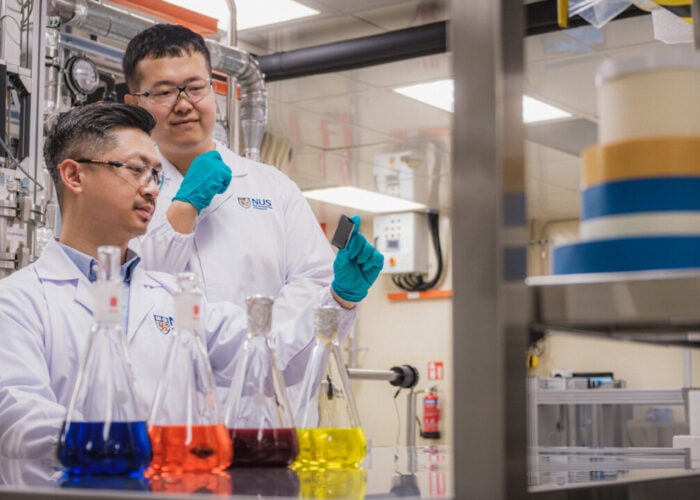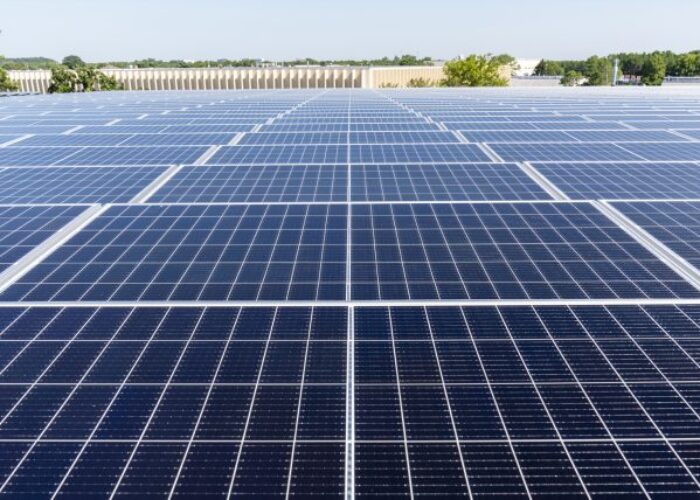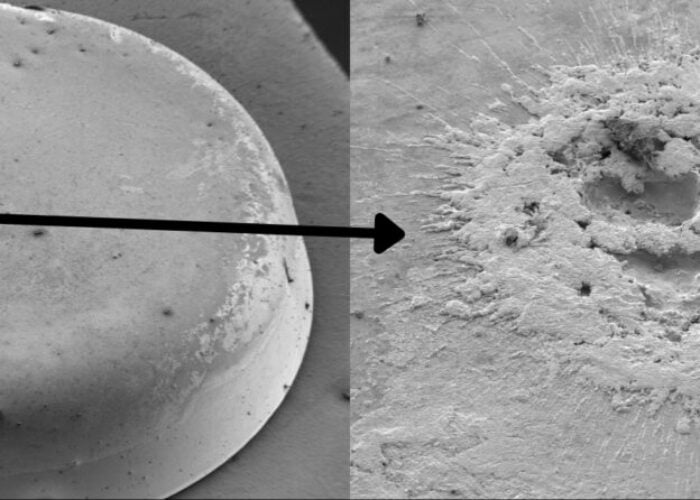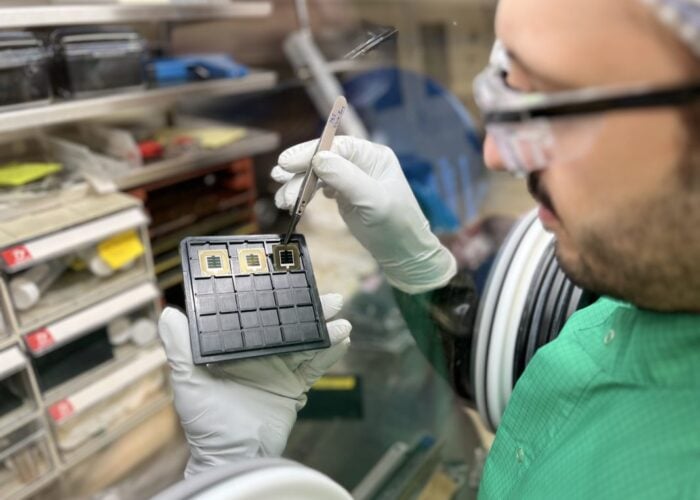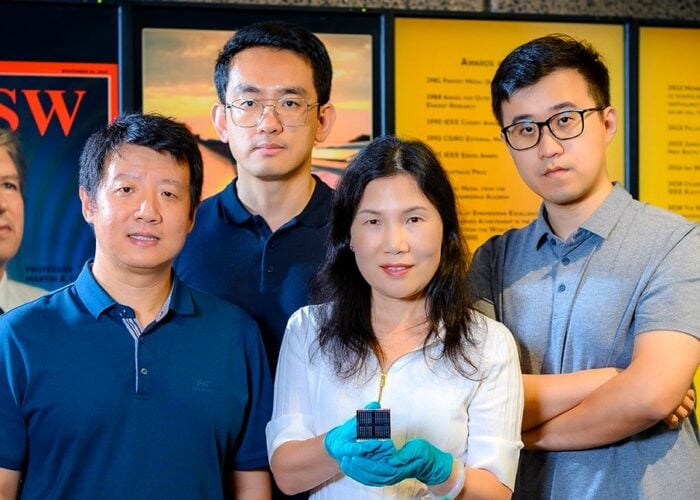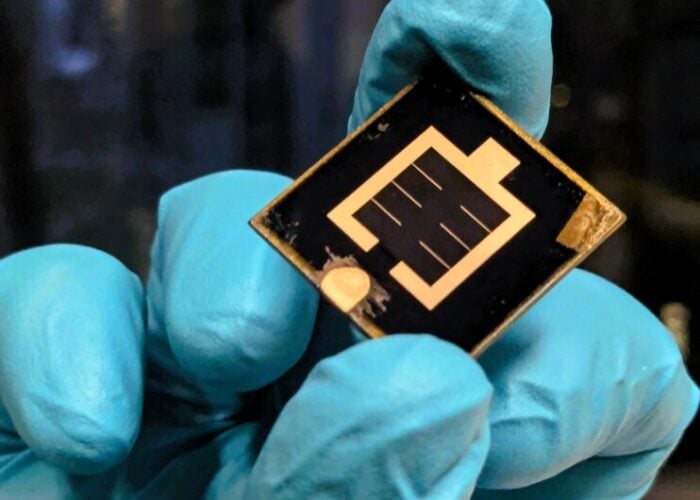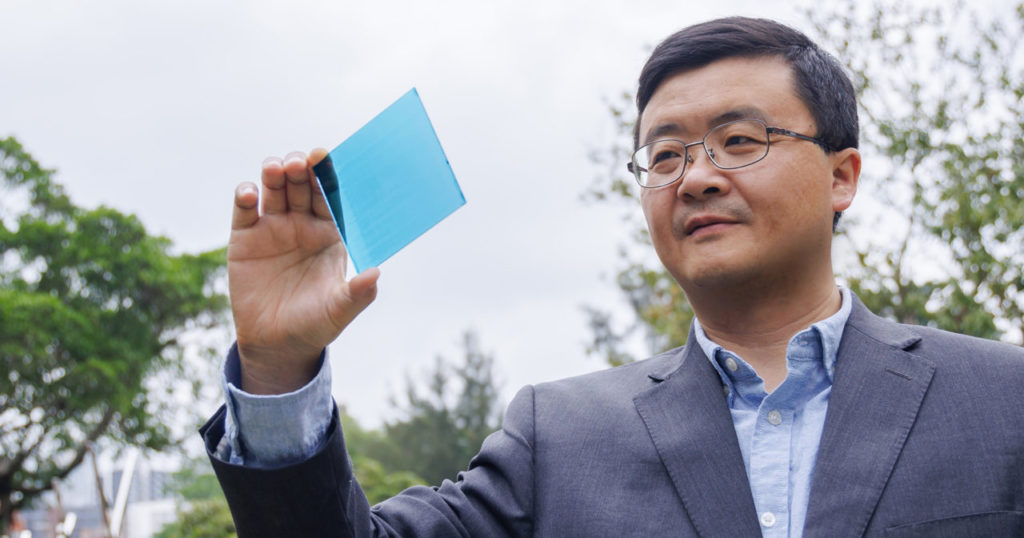
Researchers from the Hong Kong Polytechnic University have developed a new form of organic solar cell (OSC), which has recorded a power-conversion efficiency (PCE) of 19.31%, the highest among binary OSCs.
The researchers’ work focused on the layer of two materials atop the solar cell, known as the heterojunction. The team developed a “non-monotonic intermediated state manipulation strategy,” according to the university. This helped to generate “more ordered molecular stacking and favourable molecular aggregation” within the heterojunction, improving the overall efficiency of the cell.
Unlock unlimited access for 12 whole months of distinctive global analysis
Photovoltaics International is now included.
- Regular insight and analysis of the industry’s biggest developments
- In-depth interviews with the industry’s leading figures
- Unlimited digital access to the PV Tech Power journal catalogue
- Unlimited digital access to the Photovoltaics International journal catalogue
- Access to more than 1,000 technical papers
- Discounts on Solar Media’s portfolio of events, in-person and virtual
While most solar cells use silicon to absorb sunlight and generate electricity, OSCs use carbon-based minerals for the same process. These cells have historically struggled to maintain their efficiency over several years, which has discouraged large-scale and long-term investment into the technology.
Indeed, the US Department of Energy reports that most OSCs struggle to achieve a PCE of 11%. However, the process developed by the Hong Kong Polytechnic researchers was shown to have reduced the waste heat lost by the cells, and the team is optimistic that OSCs will soon break the 20% PCE barrier.
“The new finding will make OSC research an exciting field, and this will likely create tremendous opportunities in applications like portable electronics and building-integrated PVs,” said professor Li Gang, chair professor of energy conversion technology at the university, and leader of the research team.
While the technology is still in its early stages, there is optimism within the sector for the future of OSCs. Researchers at MIT have investigated the potential for their use in transparent solar cells, and in the long-term, the cells could prove to be easier and cheaper to build than other cells because of the abundance of carbon-based materials.
“In my opinion the adoption of OSCs should be linked to the unique properties of the technology: flexible, selective and high transparency, colourful, light weight [and] stretchable,” added Li, speaking about the future of the technology. “Transparent solar power provider [and] portable electronics could be entry points of the technology.”
“I like transparent solar cell application as solar windows, which is a unique one for building-integrated photovoltaics [and] automobile applications. Our recent transparent OSC work represents the best transparent solar cell, not [one that is] limited to OSC.”

